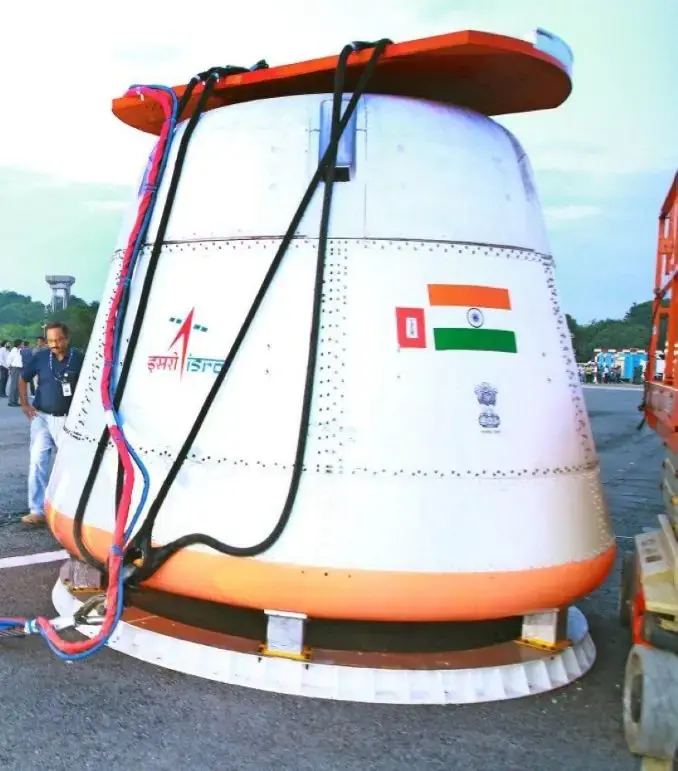India’s Gaganyaan Mission: A Giant Leap Towards Space Exploration
India is making significant strides in its space program, with the recent successful completion of the Gaganyaan Integrated Air Drop Test (IADT) marking a crucial milestone. This test, a collaborative effort between the Indian Space Research Organisation (ISRO), the Indian Air Force, Navy, and Coast Guard, demonstrated the safe return of a crew module to Earth. This is a vital step towards India’s ambitious goal of launching its first crewed mission to space.
Testing the Parachute System: A Crucial Step for Gaganyaan
The IADT focused on validating the parachute system, a critical component ensuring the safe landing of the Gaganyaan spacecraft. A heavy-lift helicopter carried a capsule simulating the weight of the actual spacecraft to an altitude of approximately 4,000 meters. Subsequently, the capsule was released. Also, its parachutes deployed sequentially, slowing its descent for a controlled splashdown in the Bay of Bengal. This carefully orchestrated sequence mirrors the procedures astronauts will rely on during their return from space.
A Complex System of Parachutes
The parachute system itself is incredibly intricate. It uses four types of parachutes working in a precise sequence: Apex Cover Separation (ACS) parachutes, Drogue parachutes, Pilot parachutes, and Main parachutes. Each type plays a specific role in gradually decreasing the CM’s speed, ensuring a smooth and safe landing. The successful deployment of all ten parachutes in the correct sequence demonstrates a high level of precision and reliability.
A Seamless Multi-Agency Operation
The successful recovery operation demonstrated the excellent coordination between different branches of the Indian defense forces. Immediately after the splashdown, the Indian Navy rapidly deployed its vessels, recovered the capsule, and swiftly transported it to the Chennai port. This seamless operation highlights the importance of inter-agency cooperation in complex missions such as Gaganyaan.
Thousands of Tests and a Vision for the Future
The IADT is just one piece of the larger puzzle. In total, ISRO plans to conduct thousands of tests before the first human spaceflight. These tests cover a wide range of disciplines, including electrical, mechanical, chemical, and software engineering. Moreover, additional tests are scheduled. Including more Integrated Air Drop Tests, Test Vehicle launches, Pad Abort Tests, and unmanned flights of the complete Gaganyaan system.
The Road to 2027
Initially slated for 2022, the Gaganyaan mission is now targeting a 2027 launch. Despite the delays, the commitment to success remains unwavering. Each test, like the recent IADT, brings India closer to its goal of joining the exclusive club of nations that have successfully sent humans into space.
A Bright Future Ahead
The Gaganyaan program aims to send humans into space by employing advanced rocket technology alongside high-level safety measures like these parachute tests. By conducting similar tests under different conditions in the future, ISRO aims to strengthen its mission objectives further. This initiative highlights how modern technology can resonate with decades of scientific progress and engineering prowess.
Additionally, to stay updated with the latest developments in STEM research, visit ENTECH Online. Basically, this is our digital magazine for science, technology, engineering, and mathematics. Furthermore, at ENTECH Online, you’ll find a wealth of information.






